Long Valley is an intensively farmed area at the confluence of two rivers in the former British ‘New Territories’ of Hong Kong. It is divided into small plots, mostly less than 50m2 where the use of large machines is impractical and human labour is the main method of cultivation. It is highly irrigated and many of the crops, such as taro, watercress, rice and lotus flower, require that the plots are permanently flooded. Each plot is separated by a thin, low, bund that serves as a footpath as well as containing the water. Many also appear to have been left fallow, but still flooded.
Snipe adore these conditions and many of them can be seen in, or rather flushed from, all of the wet paddy fields here. The trick is to see the bird before you get too close. Very occasionally they will sit tight and explode from beneath your feet, but mostly they took flight from at least five meters in front of me.
Walking slowly and scanning ahead allowed me to see quite a few, but they were almost always very wary, trying not to be seen. Most of them would have been Common Snipe, but it was possible that some Pintail or Swinhoe’s Snipe may be amongst them. The easiest way to eliminate the Common Snipe is by noting the white trailing edge to the secondaries, but since this is not always conspicuous, it is not reliable if you fail to spot it on a fast moving, zig-zagging bird. Even if you can definitely say that there was no white trailing edge, the bird has flushed and it would not be possible to say which of the other species it may have been.
Their flushing habits can be useful, with Common Snipe emitting a “dry, rasping call” (Clive Viney, Birds of Hong Kong and South China) as it rises for its zig-zaggy flight. The Pintail Snipe only zig-zags briefly and gives a sound more akin to a quack.
One of the birds today appeared to leap from its hiding place without making a sound, land a few feet away, dipping its bill into the water and taking off again immediately, without zig-zagging, to settle in a denser patch of rank vegetation in the same paddy. According to Viney et al, this behaviour would be compatible with a Swinhoe’s Snipe.
Some individuals were accommodating enough to allow me a clear shot as long as there was a good distance of water between us.
Having got used to seeing snipe either frozen to avoid being seen or in panicked flight, it was odd to note a bird which bobbed as it darted towards the bank at my approach. It stopped, turned and crouched, showing the short, drooping bill and distinctive eye-marking of a Greater Painted Snipe.
Painted Snipe have their own family, separate from the true snipes. If interviewed on day-time television, top of the producer’s agenda for discussion would be the titillating subject of sexual role reversal. All immature birds for example take on the male plumage before young females moult into their more showy adult outfit. It is the larger female who calls and courts the male, often mating with several and leaving them to brood and rear the young.
Two male-plumaged birds were seen in this paddy. They may have been immature siblings, but it is also possible that two mature males could live in close quarters.
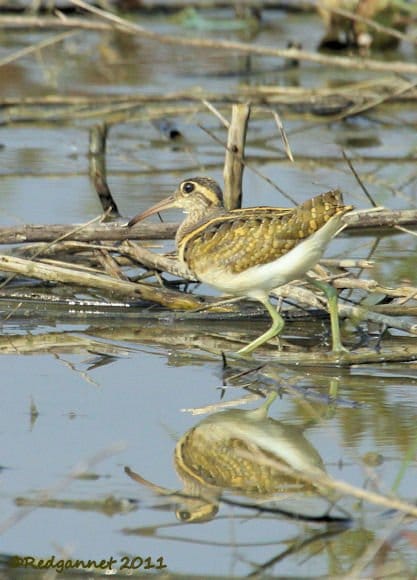
Notably the Painted Snipes did not flush, but darted back to cover, with their distinctive gait. If they had have flown, oval patches at the side of the tail would have been visible and the legs are left to trail beneath the bird.



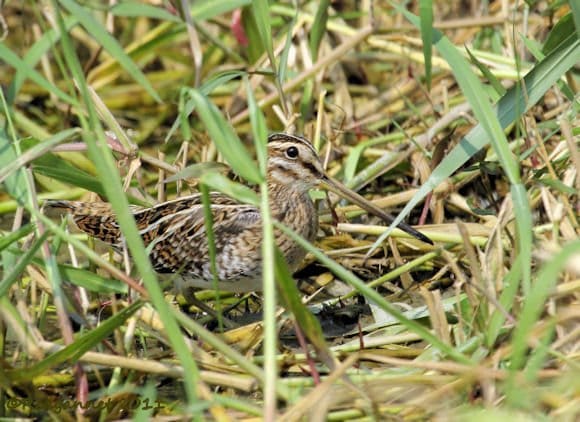
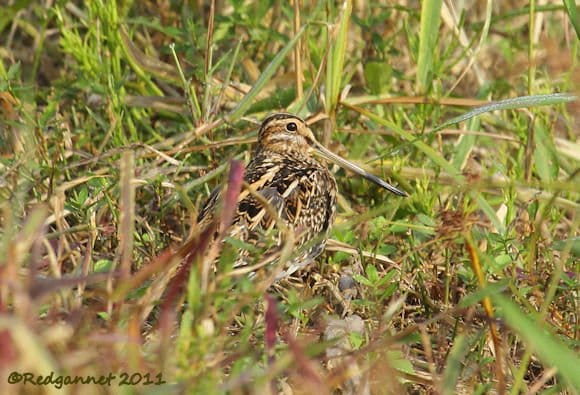
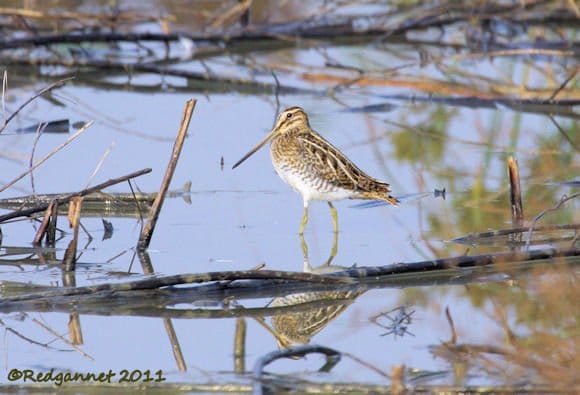
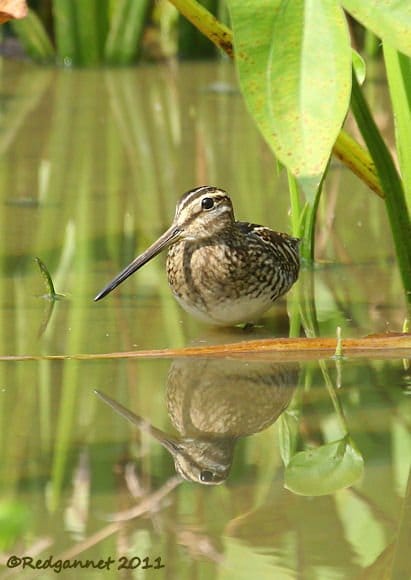
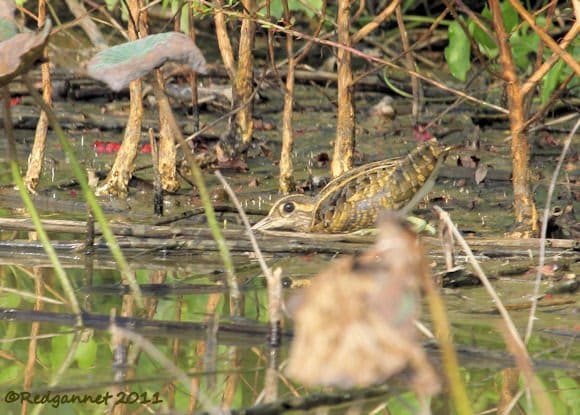
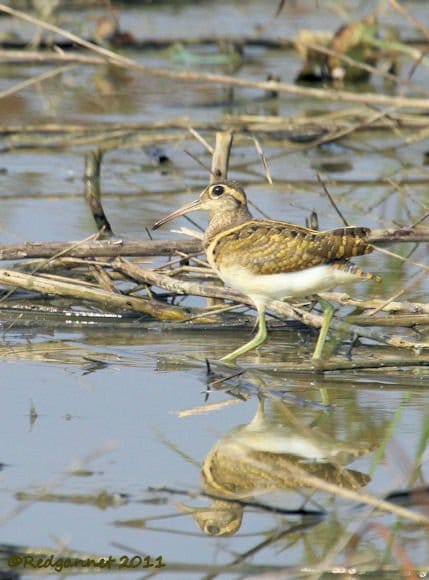



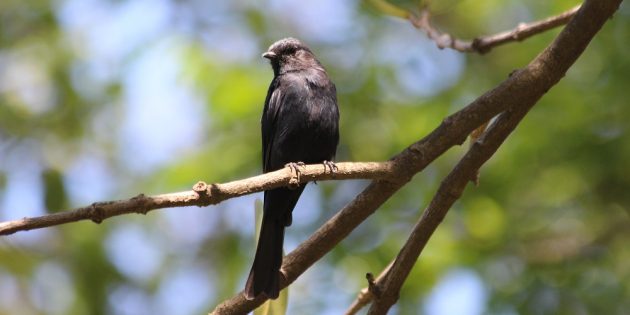

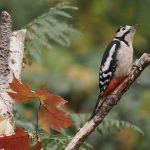
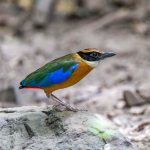


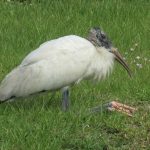
Very nice post. I have not found a reliable place to see the snipe, it seems like our snipe are very difficult to see.
Great shots of the Snipes. I just love these cool looking birds. Their big eyes are beautiful.
We should get some snipe back at the Poo Ponds soon! 🙂
So, have you identified the Gallinago-snipes in this post? 🙂 😉
Awesome observation of Painted Snipe.
@ Jochen, aha, well, now you see, what you must understand is…..
Hi Jochen, all of the snipe that flushed had the white trailing edge to the secondaries, so I must put them down as Common Snipe. The only thing that differentiated the birds in the photographs was that they did not flush, but then they were at a reasonable distance and obviously didn’t feel the need.
It would be interesting to know if different species of snipe have varying minimum flushing distances, but I suspect that the terrain and the degree of cover will have more bearing on how close you can approach.
Only one bird behaved inconsistently with Common Snipe habits. The bird described as a potential Swinhoe’s Snipe disappeared into deeper vegetation and I never saw it again.
So in answer to your question, by numbers confirmed, I suspect that all the birds pictured are Common Snipe. If you can tell from the photos, please let me know the trick.
What, me?? Identify a Gallinago in east Asia?
Pffffff … [spits coffee all overthe computer] … ahahahaaaaaaa!!!
Okay, as serious as i can get: If I saw the first and last of your Gallinagos here in Germany, I’d feel confused, just emotionally unstable, getting nervous, feeling something isn’t right. No field marks, just intuition.
Whatever that means.
The two central pics would go down in my book as Common Snipe without second thoughts or heart attacks.
Helps?
No?
Well, we’re talking about East Asian Gallinagos, so what do you expect?!? 🙂 🙂